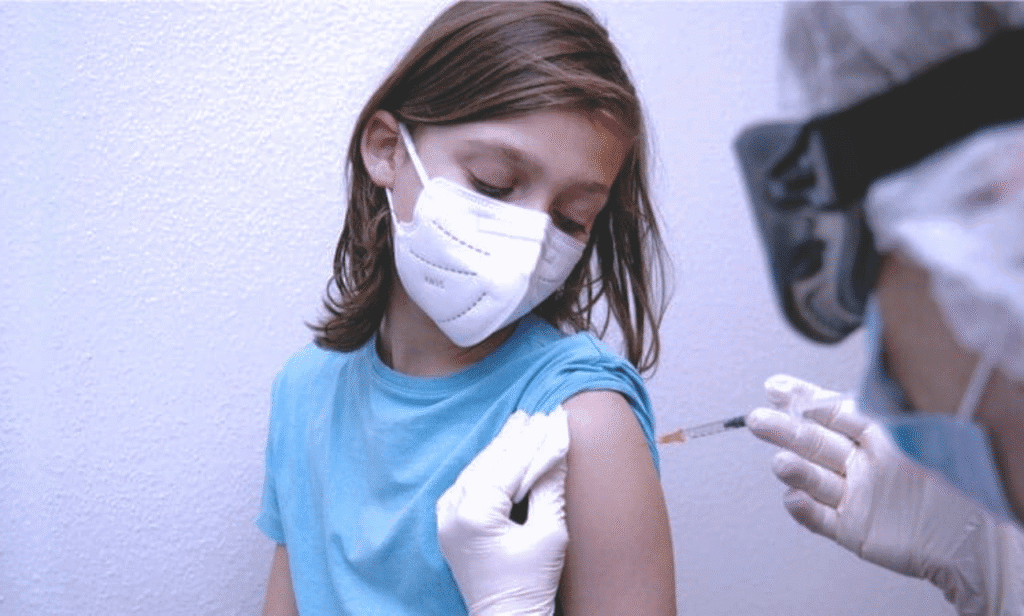
For many families, the end of a child’s bout with COVID-19 was a moment of profound relief. The fear had passed, the isolation ended, and the assumption was that life would return to normal. But for a significant number of children, the conclusion of the acute infection was not the finish line. Instead, it marked the beginning of a new, confusing, and often frightening chapter: a prolonged battle with a constellation of symptoms that has come to be known as long COVID. A pivotal new study from the Ann & Robert H. Lurie Children’s Hospital of Chicago is now shedding critical light on this condition in young people, moving it from the shadows of anecdotal reports into the clear light of scientific understanding. This research provides some of the most compelling data to date on how commonly children are affected and what their journey often looks like.
The Lurie Children’s study, one of the most comprehensive of its kind, followed a large cohort of children and adolescents over an extended period. The findings challenge the early, and perhaps overly optimistic, belief that children were largely spared from the long-term effects of the virus. The research indicates that a concerning percentage of young people who contract COVID-19, even mild or asymptomatic cases, go on to experience symptoms that persist for months. The study’s methodology was rigorous, tracking children’s health for a minimum of three months post-infection and carefully controlling for other potential factors. This approach gives significant weight to its conclusions, suggesting that long COVID is a genuine and measurable health phenomenon in the pediatric population, not a vague collection of unrelated complaints. The data provides the concrete evidence that parents and doctors have been desperately seeking to validate their experiences.
So, what does long COVID actually look like in a child? The presentation is rarely uniform, which is part of what makes it so difficult to diagnose and manage. The most common symptoms reported in the study and echoed in clinics worldwide are profound and persistent fatigue, cognitive dysfunction often called “brain fog,” and recurring headaches. This fatigue is not simply feeling a little tired after a long day. It is a debilitating exhaustion that is not relieved by rest and can severely limit a child’s ability to participate in school, sports, and social activities. Brain fog manifests as problems with memory, attention, and concentration. A previously stellar student may suddenly struggle to focus in class or remember what they read. Headaches can be daily and unrelenting, ranging from a constant dull ache to severe migraines. Beyond this core trio, the list of potential symptoms is long and varied.
Other frequently reported issues include persistent shortness of breath, heart palpitations, chest pain, abdominal pain and digestive problems, loss of smell or taste, dizziness upon standing, sleep disturbances, and significant mental health challenges like anxiety and depression. The sheer range of symptoms means that long COVID can mimic many other conditions, leading families on a frustrating diagnostic odyssey from one specialist to another. A child might see a cardiologist for heart palpitations, a neurologist for headaches, a gastroenterologist for stomach issues, and a psychiatrist for new-onset anxiety, without any single doctor piecing the entire puzzle together. This fragmented care approach often leaves parents feeling lost and children feeling unheard. The Lurie study helps to unify these symptoms under one overarching cause, providing a crucial roadmap for pediatricians.
Identifying which children are most at risk is a critical component of the new research. While any child can develop long COVID, the study pointed to certain factors that increase susceptibility. Adolescents and teenagers appear to be more vulnerable than younger children. Girls may be affected at a slightly higher rate than boys, a trend also seen in some adult long COVID studies. Children who had a more severe initial COVID-19 infection, particularly those who required hospitalization, are at a greater risk. However, and this is a crucial point emphasized by the researchers, a significant number of children with long COVID had only a mild or even asymptomatic initial illness. This finding is particularly alarming because it means the absence of severe sickness is no guarantee against long-term complications. Underlying health conditions, such as asthma or autoimmune disorders, may also play a role in increasing a child’s vulnerability.
Understanding the potential biological mechanisms behind long COVID is an area of intense scientific investigation. Experts theorize that it is not a single disease but a syndrome with several possible contributing causes. One leading hypothesis is that fragments of the virus persist in the body, hiding in various tissues and triggering a continuous, low-level inflammatory response. This chronic inflammation could then damage organs and disrupt normal bodily functions. Another theory focuses on an autoimmune response, where the initial infection tricks the immune system into attacking the body’s own healthy tissues, similar to what is seen in conditions like lupus or rheumatoid arthritis. A third area of research involves the widespread damage the virus can cause to the delicate lining of blood vessels, leading to microscopic blood clots that impair circulation and oxygen delivery to organs, including the brain. It is likely that a combination of these factors is at play, differing from one child to another.
For parents who suspect their child may be suffering from long COVID, the path forward can feel daunting. The first and most important step is to find a knowledgeable and validating healthcare provider. This often means seeking out a pediatrician who is up-to-date on the latest long COVID research or a specialized post-COVID care clinic, though access to these clinics can be limited. There is no single diagnostic test for long COVID. Diagnosis is primarily based on a detailed history of a confirmed or suspected COVID-19 infection, followed by the emergence of new, persistent symptoms that cannot be explained by another condition. Doctors will typically run a battery of tests to rule out other possible causes for the symptoms, such as thyroid issues, vitamin deficiencies, or other infections. A diagnosis of long COVID is often one of exclusion, made after other possibilities have been carefully considered.
Managing and treating long COVID in children requires a patient, holistic, and multidisciplinary approach. Since there is no specific medication approved to cure the condition, treatment focuses on managing symptoms and improving quality of life. Pacing is a cornerstone of managing fatigue. This involves carefully balancing activity with rest to avoid post-exertional malaise, a devastating crash in energy that occurs after even minor physical or mental exertion. Parents and children learn to identify the child’s energy limits and plan their days accordingly, which may involve reducing school hours, taking frequent breaks, and postponing strenuous extracurricular activities. Cognitive symptoms like brain fog can be supported with accommodations at school, such as extra time on tests, reduced homework loads, and the use of planners and organizational aids. For physical symptoms like headaches or chest pain, doctors may prescribe medications or recommend physical therapy.
The mental and emotional toll of long COVID on a child cannot be overstated. The sudden loss of health, the inability to keep up with peers, the social isolation, and the frustration of an invisible illness can lead to severe anxiety and depression. Integrating mental health support is therefore not an optional extra but an essential part of treatment. Cognitive-behavioral therapy can help children develop coping strategies for dealing with chronic pain and fatigue, while counseling can provide a safe space to process the grief and frustration of their new reality. Support groups, both for the children and their parents, can be incredibly valuable, reducing feelings of isolation and providing a network of people who truly understand the daily challenges. Recovery from long COVID is rarely a linear process. Children may experience periods of improvement followed by frustrating setbacks, often triggered by overexertion or another minor illness. The timeline for recovery is highly variable, with some children improving over a few months and others struggling with symptoms for a year or more. The message from leading experts, including those involved in the Lurie study, is one of cautious optimism. Most children do seem to eventually recover, but it requires immense patience, supportive care, and a belief in the child’s experience. This new research is a vital step forward, providing the evidence base needed to drive funding, inform clinical guidelines, and ultimately, develop effective treatments to help every child reclaim their health and their childhood.
